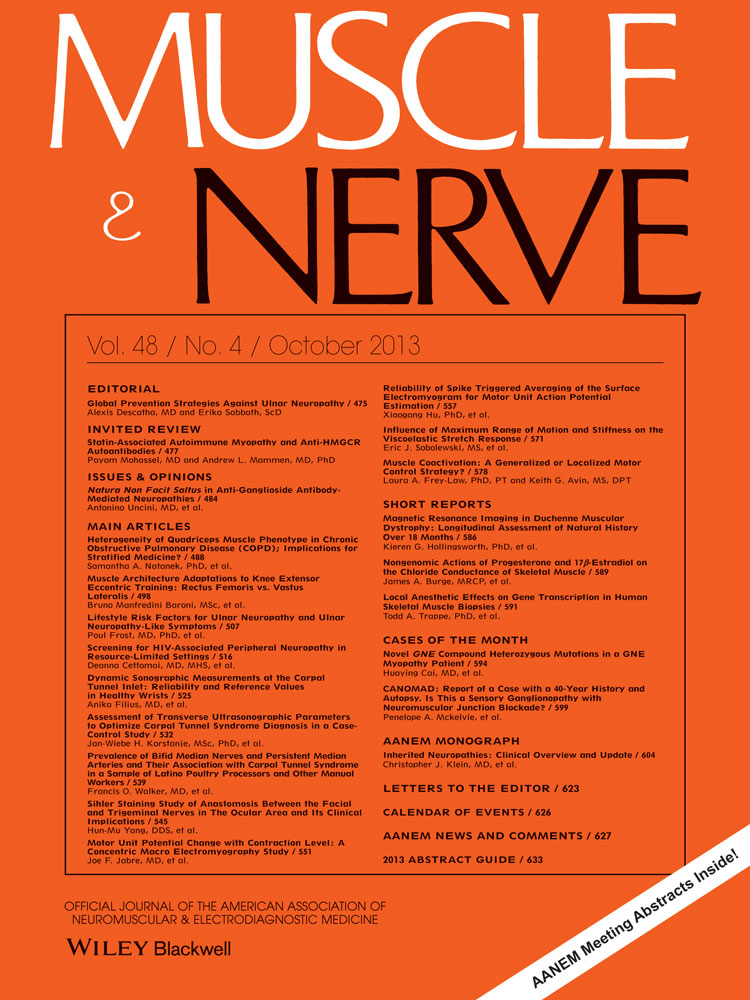Nongenomic actions of progesterone and 17β-estradiol on the chloride conductance of skeletal muscle
James A. Burge was funded by the National Commissioning Group of the United Kingdom Department of Health.
The copyright line for this article was changed on 20 November 2015 after original online publication
ABSTRACT
Introduction: Myotonia congenita, caused by mutations in ClC-1, tends to be more severe in men and is often exacerbated by pregnancy. Methods: We performed whole-cell patch clamp of mouse muscle chloride currents in the absence/presence of 100 μM progesterone or 17β-estradiol. Results: 100 μM progesterone rapidly and reversibly shifted the ClC-1 activation curve of mouse skeletal muscle (V50 changed from −52.6 ± 9.3 to +35.5 ± 6.7; P < 0.01) and markedly reduced chloride currents at depolarized potentials. 17β-estradiol at the same concentration had a similar but smaller effect (V50 change from −57.2 ± 7.6 to −40.5 ± 9.8; P < 0.05). 1 μM progesterone produced no significant effect. Conclusions: Although the data support the existence of a nongenomic mechanism in mammalian skeletal muscle through which sex hormones at high concentration can rapidly modulate ClC-1, the influence of hormones on muscle excitability in vivo remains an open question. Muscle Nerve 48: 589–591, 2013




